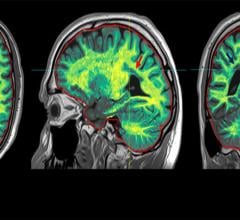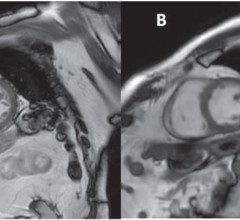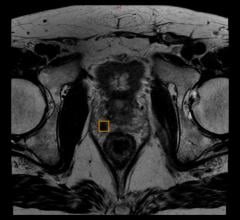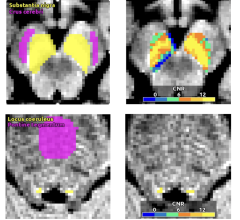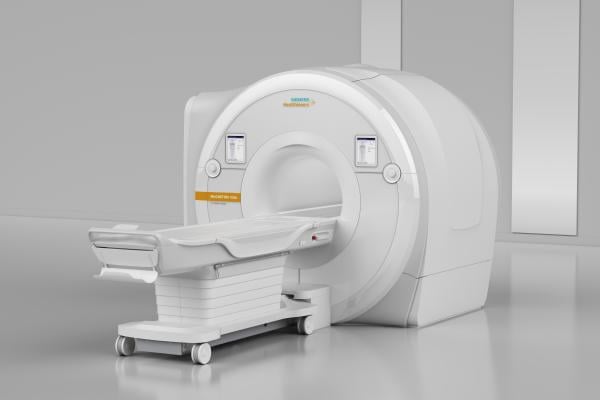
Image courtesy of Siemens Healthineers
Wide bore magnetic resonance imaging (MRI) systems have allowed radiologists to offer patients the optimized comfort of conventional open bore systems, as well as the high-quality imaging of conventional closed bore systems. Because wide bore MRIs have broadened the demographic of patients who can be tested, the systems have gained widespread adoption, with many practices opting to equip their offices solely with wide bore systems.
The most recent advancements in MRI technology have been to enhance clinical performance with additional research-focused capabilities.
TBI Detection
In August, GE Healthcare announced that Signa Premier, a wide bore 3.0T MRI system, is now available for sale in the U.S. Signa Premier is the result of a four-year collaboration with the National Football League (NFL) and research institutions around the world working to design new imaging tools, particularly to aid researchers in the detection of biomarkers for the potential diagnosis of mild traumatic brain injury (TBI). GE said the system delivers a new level of clinical performance with additional research-focused capabilities, especially for neurology and oncology research.
The system features a short-bore, high-homogeneity 3.0T superconductive magnet — the most powerful gradient system GE Healthcare has developed for a wide bore 3.0T system, according to the company. It also offers a new, digital RF transmit and receive architecture. Clinical and research applications benefit from this high-performance hardware as well as machine learning software that includes cloud analytics. The system is powered by SuperG gradient technology. The SuperG gradient coil introduces high performance and stability, which is designed to deliver the capabilities of an ultra-high-performance, research-class 60 cm MRI system in a 70 cm bore.
The RF technology of Signa Premier provides 146 independent receiver channels that allow the simultaneous acquisition of patient data from multiple high channel-density surface coils for faster scanning, higher image quality and overall enhanced clinical performance compared to previous-generation
GE MRI systems.
The 48-channel head coil delivers improved clinical performance compared to previous GE MRI systems for virtually every patient. A fit-adaptable design addresses 99.99 percent of the population while preserving high signal-to-noise ratio (SNR) and high image quality. It also can perform a routine fast brain examination in under five minutes by leveraging HyperSense, a new speed scanning tool, delivering up to eight times faster scanning than previous-generation GE MRI systems, which is part of the HyperWorks application suite.
Reducing Patient Variability
In June, the U.S. Food and Drug Administration (FDA) cleared the Magnetom Vida 3.0T MRI scanner from Siemens Healthineers. It features BioMatrix technology that addresses inherent anatomical and physiological differences among patients, as well as user variability. By reducing this variability among patients and users, the scanner’s BioMatrix technology can lower the number of rescans and increase productivity to improve MRI’s cost efficiency.
The Magnetom Vida with BioMatrix technology helps healthcare providers perform a full range of routine and complex examinations while delivering strong results for each patient. BioMatrix sensors built into the scanner’s new patient table automatically track respiratory patterns as soon as the patient lies on the table, providing information that can help formulate the optimal exam strategy. In addition to helping users avoid costly rescans, BioMatrix tuners improve the quality and reproducibility of whole-spine diffusion imaging via individual slice adjustments that mitigate distortion that otherwise may occur, especially at 3.0T. Biomatrix Interfaces help ensure consistently high exam quality, accelerating scanning by up to
30 percent and improving patient care. The scanner’s intuitive user interface permits correct one-touch positioning of the patient table based on intelligent body models. The patient table provides motorized assistance, enabling users to move patients who can be difficult to move to and from the scanner.
The new system architecture of the Magnetom Vida offers high performance and long-term stability without the need for additional space. The company said the scanner’s 60/200 XT gradient system offers the most powerful commercially available gradients in a 70 cm bore scanner. The 55 x 55 x 50 cm field of view enables coverage of larger body regions in one step.
The GO technologies of the Magnetom Vida automate and simplify workflows from the start of the scan through quality control of the image data, resulting in increased productivity for routine examinations of the brain, spine and joints — from touch-of-a-button patient positioning to the transfer of clinical images to the picture archiving and communication system (PACS). The system’s new user interface not only enables automated image acquisition and processing, but also allows advanced post-processing applications to run at the scanner.
“With the Magnetom Vida, Siemens Healthineers proudly offers customers a 3.0T MRI system that provides unprecedented levels of personalization throughout the patient examination, to effectively address the unique challenges of each patient group and provide high-quality imaging to previously underserved segments of the population,” said Murat Gungor, vice president of magnetic resonance, Siemens Healthineers North America.
Confident Diagnostic Decisions
Demonstrating MRI’s valuable role across the health continuum with the technology that sheds light on intricate anatomical structures, Philips introduced the software application MultiBand Sense. It allows simultaneous acquisition of multiple slices in the brain in functional MRI (fMRI) and diffusion imaging. This capability enables accelerated neuro-functional and diffusion scans at high speed and high resolution with virtually no impact on signal-to-noise ratio (SNR), providing radiologists with the option to increase coverage or resolution without increasing scan time. MultiBand Sense leverages Philips’ dStream digital platform on the Ingenia 3.0T family of MRI systems.
Also currently in development are Compressed Sense, designed to address the challenges associated with bringing speed in MRI while maintaining consistent image quality; and APT (Amide Proton Transfer), which addresses the need for definitive diagnosis in neuro-oncology.
This article originally ran as an introduction to the MRI Wide Bore Systems comparison chart in the October 2017 issue. The chart can be viewed here.


 April 17, 2024
April 17, 2024 



